Étiquette : Graeber
With Kondiaronk and Leibniz, re-inventing a society without oligarchy
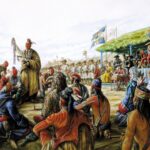

By Karel Vereycken, May 2023.
Helga Zepp-LaRouche, the founder of the Schiller Institute, in her keynote address to the Schiller Institute’s Nov. 22, 2022 videoconference, “For World Peace—Stop the Danger of Nuclear War: Third Seminar of Political and Social Leaders of the World,” called on world leaders to eradicate the evil principle of oligarchy.
Oligarchy is defined as a power structure in which power rests with a small number of people having certain characteristics (nobility, fame, wealth, education, or corporate, religious, political, or military control) and who impose their own power over that of their people.
To be precise, Zepp-LaRouche said :
“For 600 years, there has been a continuous battle between two forms of government, between the sovereign nation state and the oligarchical form of society, vacillating back and forth with sometimes a greater emphasis in this or that direction.
All empires based on the oligarchical model have been oriented towards protecting the privileges of the ruling elite, while trying to keep the masses of the population as backward as possible,
because as sheep they are easier to control (…)”
Now, unfortunately, most of the citizens of the transatlantic world and elsewhere will tell you that abolishing the oligarchical principle is “a good idea”, a “beautiful dream”, but that reality tells us “it can’t happen” for the very simple reason that “it never happened before”.
Societies, by definition, they argue, are in-egalitarian. Kings and Presidents of Republics, they argue, eventually might have “pretended” they ruled over the masses for their “common good”, but in reality, our fellow-citizens think, it was always the rule of a handful favoring their own interest over the majority.
The BRICS
Interesting for all of us, is that some leading thinkers involved in the BRICS movement, are trying to imagine new ways of collective rule excluding oligarchical principles.
For example, going in that direction, economist Pedro Paez, former advisor to Ecuador’s Rafael Correa, in his intervention at the April 15-16 Schiller Institute’s video conference, defended
“a new concept of currency based on monetary arrangements of clearing houses for regional payments, that can be joined into a world clearing house system, which could also prevent another type of unilateral, unipolar hegemony from arising, such as the one that was established with Bretton Woods, and that would instead open the doors to multipolar management”.
Also Belgian philosopher and theologian Marc Luyckx, a former member of the Jacques Delors famous taskforce « Cellule de Prospective » of the European Commission, in a video interview on the de-dollarization of the world economy, underlined that the BRICS countries are creating a world order whose nature makes it so that not a single member of their own group can become the dominant power.
The Dawn of Everything

The good news is that a mind-provoking, 700-page book, titled “The Dawn of Everything: A New History of Humanity”, written and published in 2021 by the American anthropologist David Graeber and the British archaeologist David Wengrow, destroys the conventional notions of ancient human cultures making linear progress toward the neo-liberal economic model and therefore, by implication, high levels of inequality.
Even better, based on hard facts, the book largely debunks the “narrative” that oligarchical rule is somehow “natural”. Of course, the oligarchical principle ruled often and often for a long time. But, surprisingly, the book offers overwhelming indications and “hard facts” proving that in ancient times, some societies, though not all, which eventually prospered over centuries, through political choices, consciously adopted modes of governance preventing minority groups from permanently keeping a hegemonic grip over societies.
Zepp-LaRouche’s 10th point

The subject matter of this issue is intimately linked to the 10th point raised by Helga Zepp-LaRouche, which, in order to demonstrate that all sources of evil can be eradicated by education and political decision, that man’s natural inclination, is intrinsically to do the good. The very existence of historical precedents of societies surviving without oligarchy over hundreds of years, is of course, the “practical” proof of man’s axiomatic inclination to do the good.
Unsurprisingly, some argue that the issue of “good” and “evil” is nothing but a “theological debate”, since the concepts of “good” and “evil” are concepts made up by humans in order to compare themselves with one another. They argue it would never occur to anyone to argue about whether a fish, or a tree, were good or evil, since they lack any form of self-conscience enabling them to measure if their deeds and actions fulfill their own inclination or that of their creator.
Now, part of the “Biblical answer” to this question, if man is bad or evil, claims that people “once lived in a state of innocence”, yet were tainted by original sin. We desired to be godlike and have been punished for it; now we live in a fallen state while hoping for future redemption.
Overturning the evil Rousseau and Hobbes
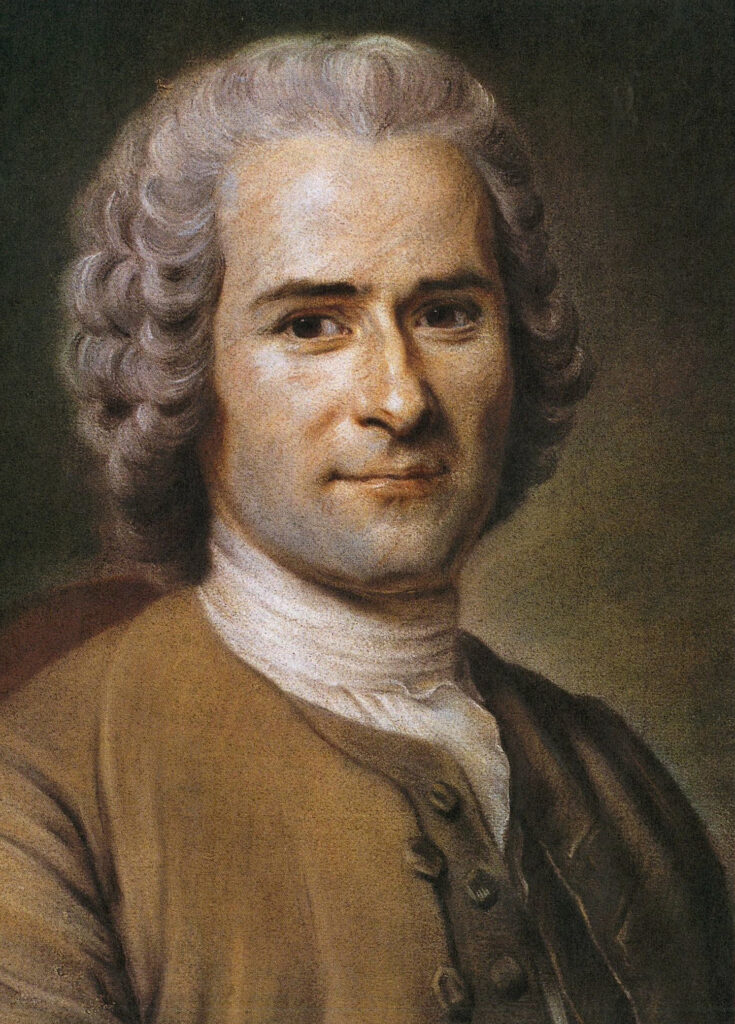

Graeber and Wengrow, establishing the core argument of their entire book, demonstrate in a very provocative way how we got brainwashed by the pessimistic and destructive oligarchical ideology, especially that promoted by both Rousseau and Hobbes, for whom inequality is the natural state of man, a humanity which might have eventually been good as “a noble savage”, before becoming “civilized” and a society only surviving thanks to a “social contract” (voluntary bottom-up submission) or a “Leviathan” (top down dictatorship) :
“Today, the popular version of this [biblical] story [of man thrown out of the Garden of Eden] is typically some updated variation on Jean-Jacques Rousseau’s Discourse on the Origin and the Foundation of Inequality Among Mankind, which he wrote in 1754. Once upon a time, the story goes, we were hunter-gatherers, living in a prolonged state of childlike innocence, in tiny bands. These bands were egalitarian; they could be for the very reason that they were so small. It was only after the “Agricultural Revolution,” and then still more the rise of cities, that this happy condition came to an end, ushering in ‘civilization’ and ‘the state’—which also meant the appearance of written literature, science and philosophy, but at the same time, almost everything bad in human life: patriarchy, standing armies, mass executions and annoying bureaucrats demanding that we spend much of our lives filling in forms.
“Of course, this is a very crude simplification, but it really does seem to be the foundational story that rises to the surface whenever anyone, from industrial psychologists to revolutionary theorists, says something like ‘but of course human beings spent most of their evolutionary history living in groups of ten or twenty people,’ or ‘agriculture was perhaps humanity’s worst mistake.’ And as we’ll see, many popular writers make the argument quite explicitly. The problem is that anyone seeking an alternative to this rather depressing view of history will quickly find that the only one on offer is actually even worse: if not Rousseau, then Thomas Hobbes.
“Hobbes’s Leviathan, published in 1651, is in many ways the founding text of modern political theory. It held that, humans being the selfish creatures they are, life in an original State of Nature was in no sense innocent; it must instead have been ‘solitary, poor, nasty, brutish, and short’—basically, a state of war, with everybody fighting against everybody else. Insofar as there has been any progress from this benighted state of affairs, a Hobbesian would argue, it has been largely due to exactly those repressive mechanisms that Rousseau was complaining about: governments, courts, bureaucracies, police. This view of things has been around for a very long time as well. There’s a reason why, in English, the words ‘politics’ ‘polite’ and ‘police’ all sound the same—they’re all derived from the Greek word polis, or city, the Latin equivalent of which is civitas, which also gives us ‘civility,’ ‘civic’ and a certain modern understanding of ‘civilization.
“Human society, in this view, is founded on the collective repression of our baser instincts, which becomes all the more necessary when humans are living in large numbers in the same place. The modern-day Hobbesian, then, would argue that, yes, we did live most of our evolutionary history in tiny bands, who could get along mainly because they shared a common interest in the survival of their offspring (‘parental investment,’ as evolutionary biologists call it). But even these were in no sense founded on equality. There was always, in this version, some ‘alpha-male’ leader. Hierarchy and domination, and cynical self-interest, have always been the basis of human society. It’s just that, collectively, we have learned it’s to our advantage to prioritize our long-term interests over our short-term instincts; or, better, to create laws that force us to confine our worst impulses to socially useful areas like the economy, while forbidding them everywhere else
“As the reader can probably detect from our tone, we don’t much like the choice between these two alternatives. Our objections can be classified into three broad categories. As accounts of the general course of human history, they:
1) simply aren’t true;
2) have dire political implications and
3) make the past needlessly dull.”
As a consequence of the victory of imperial models of political power, the only accepted “narrative” of man’s “evolution”, automatically validating an oligarchical grip over society, is that which allows “confirming” the pre-agreed-upon dogma erected as immortal “truth”. And any historical findings or artifacts contradicting or invalidating the Rousseau-Hobbes narrative will be, at best, declared anomalies.
Open our eyes
Graeber and Wengrow’s book is an attempt
“to tell another, more hopeful and more interesting story; one which, at the same time, takes better account of what the last few decades of research have taught us. Partly, this is a matter of bringing together evidence that has accumulated in archaeology, anthropology and kindred disciplines; evidence that points towards a completely new account of how human societies developed over roughly the last 30,000 years. Almost all of this research goes against the familiar narrative, but too often the most remarkable discoveries remain confined to the work of specialists, or have to be teased out by reading between the lines of scientific publications.”
To give just a sense of how different the emerging picture is:
“[I]t is clear now that human societies before the advent of farming were not confined to small, egalitarian bands. On the contrary, the world of hunter-gatherers as it existed before the coming of agriculture was one of bold social experiments, resembling a carnival parade of political forms, far more than it does the drab abstractions of evolutionary theory. Agriculture, in turn, did not mean the inception of private property, nor did it mark an irreversible step towards inequality. In fact, many of the first farming communities were relatively free of ranks and hierarchies. And far from setting class differences in stone, a surprising number of the world’s earliest cities were organized on robustly egalitarian lines, with no need for authoritarian rulers,
ambitious warrior-politicians, or even bossy administrators.”
Kondiaronk, Leibniz and the Enlightenment


In fact, Rousseau’s story, argue the authors, was in part a response to critiques of European civilization, which began in the early decades of the 18th century. “The origins of that critique, however, lie not with the philosophers of the Enlightenment (much though they initially admired and imitated it), but with indigenous commentators and observers of European society, such as the Native American (Huron-Wendat) statesman Kondiaronk,” and many others.
And when prominent thinkers, such as Leibniz, “urged his patriots to adopt Chinese models of statecraft, there is a tendency for contemporary historians to insist they weren’t really serious”.
However, many influential Enlightenment thinkers did in fact claim that some of their ideas on the subject of inequality were directly taken from Chinese or Native American sources!
Just as Leibniz became familiar with Chinese civilization through his contact with the Jesuit missions, the ideas from Native Americans reached Europe by way of books such as the widely read seventy-one-volume report The Jesuit Relations, published between 1633 and 1673.
While today, we would think personal freedom is a good thing, this was not the case for the Jesuits complaining about the Native Americans. The Jesuits were opposed to freedom in principle:
“This, without doubt, is a disposition quite contrary to the spirit of the Faith, which requires us to submit not only our wills, but our minds, our judgments, and all the sentiments of man
to a power unknown to the laws and sentiments of corrupt nature.”
Jesuit father Jérôme Lallemant, whose correspondence provided an initial model for The Jesuit Relations, noted of the Wendat Indians in 1644: “I do not believe that there is a people on earth freer than they, and less able to allow to the subjection of their wills to any power whatever”.

Even more worrisome, their high level of intelligence. Father Paul Le Jeune, Superior of the Jesuits in Canada in the 1630:
“There are almost none of them incapable of conversing or reasoning very well, and in good terms, on matters within their knowledge. The councils, held almost every day in the Villages, and on almost all matters, improve their capacity for talking”.
Or in Lallemant’s words:
“I can say in truth that, as regards intelligence, they are in no ways inferior to Europeans and to those who dwell in France. I would never have believed that, without instruction, nature could have supplied a most ready and vigorous eloquence, which I have admired in many Hurons (American Natives); or more clear-nearsightedness in public affairs, or a more discreet management in things to which they are accustomed”.
(The Jesuit Relations, vol. XXVIII, p. 62.)
Some Jesuits went much further, noting – not without a trace of frustration – that New World “savages” seemed rather cleverer overall than the people they were used to dealing with at home.

The ideas of Native Indian statesman Kondiaronk (c. 1649–1701), known as “The Rat” and the Chief of the Native American Wendat people at Michilimackinac in New France, reached Leibniz via an impoverished French aristocrat named Louis-Armand de Lom d’Arce, Baron de la Hontan, better known as Lahontan.
In 1683, Lahontan, age 17, joined the French army and was posted in Canada. In his various missions, he became fluent in both Algonkian and Wendat and good friends with a number of indigenous political figures, including the brilliant Wendat statesman Kondiaronk. The latter impressed many French observers with his eloquence and brilliance and frequently met with the royal governor, Count Louis de Buade de Frontenac. Kondiaronk himself, as Speaker of the Council (their governing body) of the Wendat Confederation, is thought to have been sent as an ambassador to the Court of the French King, Louis XIV, in 1691.
The Great Peace of Montreal
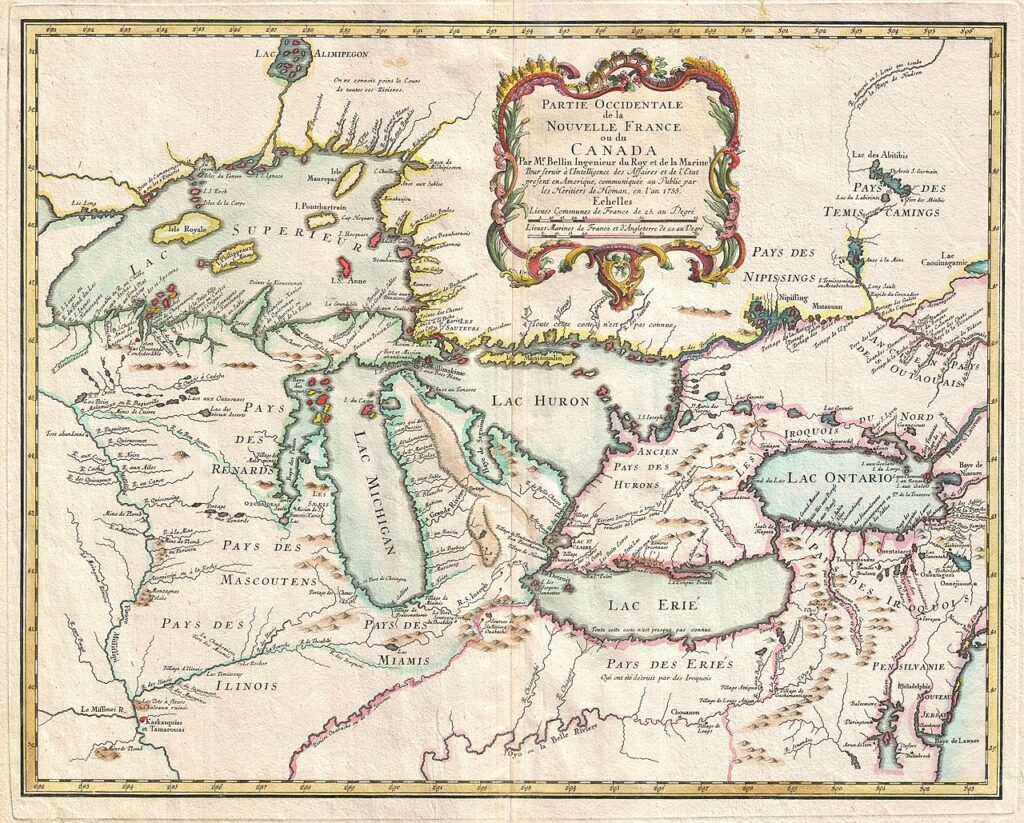

Even after being betrayed by the French, and obliged to conduct his own wars to secure his fellow men, Kondiaronk, played a key role in what is remembered as the “Great Peace of Montreal” of August 1, 1701, which ended the bloody Beaver Wars, in reality proxy wars between the British and the French, each of them using the native Indians as “cannon fodder” for their own geopolitical schemes
France was increasingly cornered by the British. Therefore, at the request of the French, in the summer of 1701, more than 1,300 Indians, from forty different nations, gathered near Montreal, dispite the fact that the city was ravaged by influenza. They came from the Mississippi Valley, the Great Lakes, and Acadia. Many were lifelong enemies, but all had responded to an invitation from the French governor. Their future and the fate of the colony were at stake. Their goal was to negotiate a comprehensive peace, among themselves and with the French. The negotiations dragged on for days, and peace was far from being guaranteed. The chiefs were wary. The main stumbling block to peace was the return of prisoners who had been captured during previous campaigns and enslaved or adopted.
Without Kondiaronk’s support, peace was unattainable. On August 1, seriously ill, he spoke for two hours in favor of a peace treaty that would be guaranteed by the French. Many were moved by his speech. The following night, Kondiaronk died, struck down by influenza at the age of 52.

But the next day, the peace treaty was signed. From now on there would be no more wars between the French and the Indians. Thirty-eight nations signed the treaty, including the Iroquois. The Iroquois promised to remain neutral in any future conflict between the French and the Iroquois’ former allies, the English colonists of New England.
Kondiaronk was praised by the French and presented as a “model” of peace-loving natives. The Jesuits immediately put out the lie that, just before dying, he had “converted” to the Catholic faith in the hope other natives would follow his model.
Lahontan from Amsterdam to Hanover
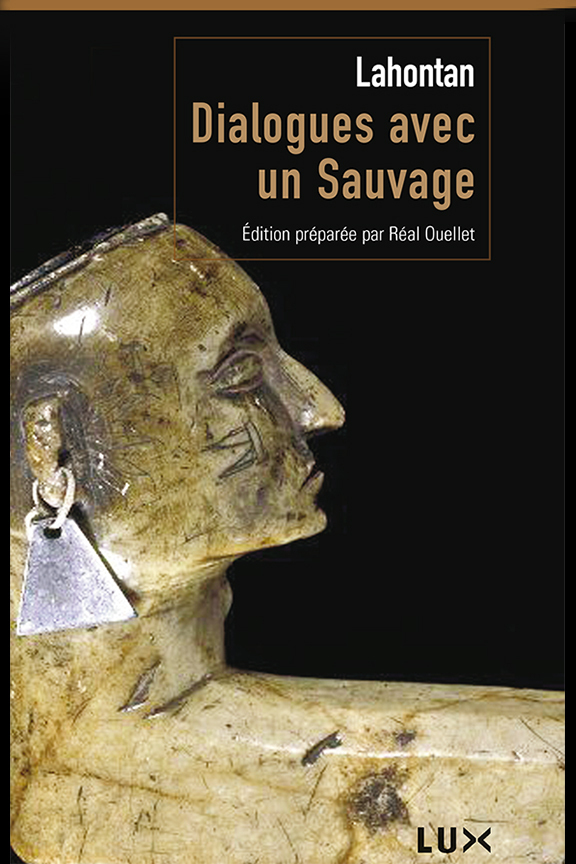
Now, following various events, Lahontan ended up in Amsterdam. In order to make a living he wrote a series of books about his adventures in Canada, the third one entitled Curious Dialogues with a Savage of Good Sense Who Has Travelled (1703), comprising four dialogues with a fictional figure, “Adario” (in reality Kondiaronk), which were rapidly translated into German, Dutch, English, and Italian. Lahontan, himself, gaining some sort of celebrity, settled in Hannover, where he befriended the great philosopher and scientist Wilhelm Gottfried Leibniz.
On the lookout for everything that was being discussed in Europe, the philosopher, then 64 years old, seems to have been put on the track of Lahontan by Dutch and German journalists, but also by the text of an obscure theologian from Helmstedt, Conrad Schramm, whose introductory lecture, the « The Stammering Philosophy of the Canadians », had been published in Latin in 1707. Referring first to Plato and Aristotle (which he abandoned almost immediately), Schramm used the Dialogues and the Memoirs of Lahontan to show how the « Canadian barbarians knock on the door of philosophy but do not enter because they lack the means or are locked into their customs”.

Far less narrow-minded, Leibniz saw in Lahontan a confirmation of his own political optimism, which allowed him to affirm that the birth of society does not come from the need to get out of a terrible state of war, as Thomas Hobbes believed, but from a natural aspiration to concord.
But what captured his main interest, was not so much whether the “American savages” were capable, or not, of philosophizing, but whether they really lived in concord without government.
To his correspondent Wilhelm Bierling, who asked him how the Indians of Canada could live “in peace although they have neither laws nor public magistracies [tribunals]”, Leibniz replied:
“It is quite true […] that the Americans of these regions live together without any government but in peace; they know neither fights, nor hatreds, nor battles, or very few, except against men of different nations and languages.
I would almost say that this is a political miracle,
unknown to Aristotle and ignored by Hobbes.”
Leibniz, who claimed to know Lahontan well, underlined that Adario, “who came in France a few years ago and who, even if he belongs to the Huron nation, judged its institutions superior to ours.”
This conviction of Leibniz will be expressed again in his Judgment on the works of M. le Comte Shaftesbury, published in London in 1711 under the title of Charactersticks:
« The Iroquois and the Hurons, savages neighboring New France and New England, have overturned the too universal political maxims of Aristotle and Hobbes. They have shown, by their super-prominent conduct, that entire peoples can be without magistrates and without quarrels, and that consequently men are neither sufficiently motivated by their good nature, nor sufficiently forced by their wickedness to provide themselves with a government and to renounce their liberty. But these savages shows that it is not so much the necessity, as the inclination to go to the best and to approach felicity, by mutual assistance, which makes the foundation of societies and states; and it must be admitted that security is the most essential point”.
While these dialogues are often downplayed as fictional and therefore merely invented for the sake of literature, Leibniz, in a letter to Bierling dated November 10, 1719, responded: « The Lahontan’s Dialogues, although not entirely true, are not completely invented either.”
As a matter of fact, Lahontan himself, in the preface to the dialogues, wrote:
“When I was in the village of this [Native] American, I took on the agreeable task of carefully noting all his arguments. No sooner had I returned from my trip to the Canadian lakes than I showed my manuscript to Count Frontenac, who was so pleased to read it that he made the effort to help me put these Dialogues into their present state.”
People today tend to forget that tape-recorders weren’t around in those days.
For Leibniz, of course, political institutions were born of a natural aspiration to happiness and harmony. In this perspective, Lahontan’s work does not contribute to the construction of a new knowledge; it only confirms a thesis Leibniz had already constituted.
A critical view on the Europeans and the French in particular
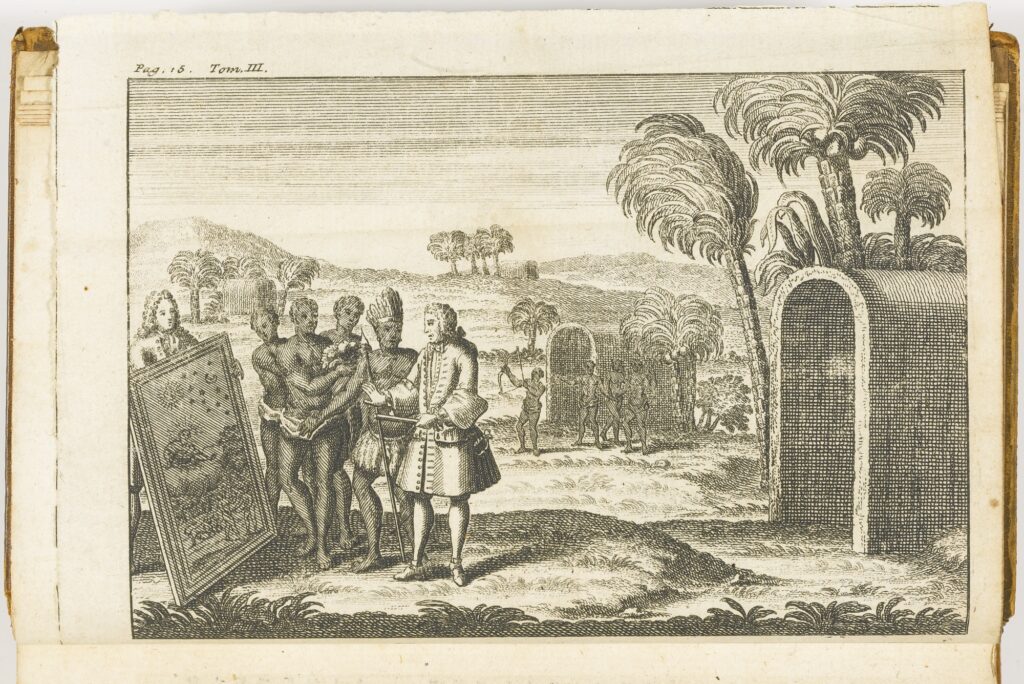
Hence, Lahontan, in his memoirs, says that Native Americans, such as Kondiaronk, who had been in France,
“were continually teasing us with the faults and disorders they observed in our towns, as being occasioned by money. There’s no point in trying to remonstrate with them about how useful the distinction of property is for the support of society: they make a joke of everything you say on that account. In short, they neither quarrel nor fight, nor slander one another; they scoff at arts and sciences, and laugh at the difference of ranks which is observed with us. They brand us for slaves, and call us miserable souls, whose life is not worth having, alleging that we degrade ourselves in subjecting ourselves to one man [the king] who possesses all power, and is bound by no law but his own will.”
Lahontan continues:
“They think it unaccountable that one man should have more than another,
and that the rich should have more respect than the poor.
In short, they say, the name of savages, which we bestow upon them, would fit ourselves better,
since there is nothing in our actions that bears an appearance of wisdom.”
In his dialogue with Kondiaronk, Lahontan tells him that if the wicked remained unpunished, we would become the most miserable people of the earth. Kondiaronk responds:
“For my part, I find it hard to see how you could be much more miserable than you already are. What kind of human, what species or creature, most Europeans be, that they have to be forced to do the good, and only refrain from evil because of fear of punishment?… You have observed we lack judges. What is the reason for that? Well, we never bring lawsuits against one another. And why do we never bring lawsuits? Well because we made a decision neither to accept or make use of money. And why do we refuse to allow money in our communities? The reason is this: we are determined not to have laws – because, since the world was a world, our ancestors have been able to live contentedly without them.”
Brother Gabriel Sagard, a French Recollect Friar, reported that the Wendat people were particularly offended by the French lack of generosity to one another:
“They reciprocate hospitality and give such assistance to one another that the necessities of all are provided for without there being any indigent beggar in their towns and villages;
and they considered it a very bad thing when they heard it said
that there were in France a great many of these needy beggars,
and thought that this was for lack of charity in us, and blamed us for it severely”.

Money, thinks Kondiaronk, creates an environment that encourages people to behave badly:
“I have spent six years reflecting on the state of European society and I still can’t think of a single way they act that’s not inhuman, and I genuinely think this can only be the case, as long as you stick to your distinctions of ‘mine’ and ‘thine’. I affirm that what you call money is the devil of devils; the tyrant of the French, the source of all evils; the bane of souls and the slaughterhouse of the living. To imagine one can live in the country of money and preserve one’s soul is like imagining one could preserve one’s life at the bottom of a lake. Money is the father of luxury, lasciviousness, intrigues, trickery, lies, betrayal, insincerity, – all of the world’s worst behaviors. Fathers sell their children, husbands their wives, wives betray their husbands, brothers kill each other, friends are false, and all because of money. In the light of all this, tell me that we Wendat are not right in refusing to touch, or so much as to look at money?”
In the third footnote of his speech on the origins on inequality, Jean-Jacques Rousseau, who invented the idea of the “noble savage” presumably existing before man engaged in agriculture, himself refers to
“those happy nations, who do not know even the names of the vices
which we have such trouble controlling,
of those American savages whose simple and natural ways of keeping public order
Montaigne does not hesitate to prefer to Plato’s laws…”
Europeans refusing to return
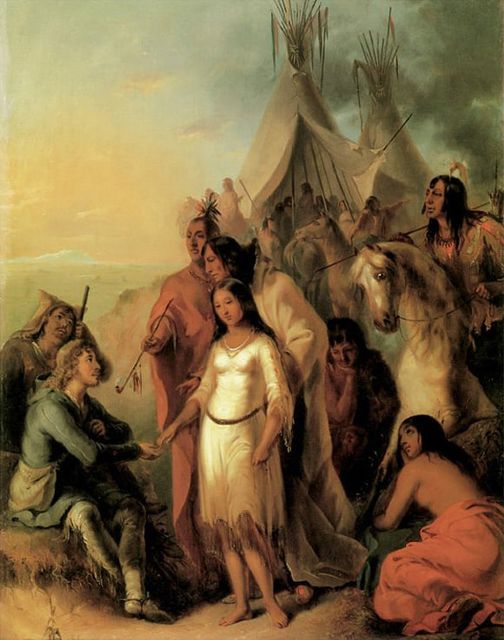
Another observation is that of Swedish botanist Peher Kalm, who, in 1749, was astonished by the fact that a large number of Europeans, exposed to Aboriginal life, did not want to return:
“It is also remarkable that the greater part of the European prisoners who, on the occasion of the war, were taken in this way and mixed with the Indians, especially if they were taken at a young age, never wanted to return to their country of origin afterwards, even though their father and mother or close relatives came to see them to try to persuade them to do so, and they themselves had every freedom to do so. But they found the Indians’ independent way of life preferable to that of the Europeans; they adopted native clothing and conformed in every way to the Indians, to the point where it is difficult to distinguish them from the Indians, except that their skin and complexion are slightly whiter. We also know of several examples of Frenchmen who have voluntarily married native women and adopted their way of life; on the other hand, we have no example of an Indian marrying a European woman and adopting her way of life; if he happens to be taken prisoner by the Europeans during a war, he always looks for an opportunity, on the contrary, to return home, even if he has been detained for several years and has enjoyed all the freedoms that a European can enjoy.”
Before Lahontan:
Thomas More’s Utopians
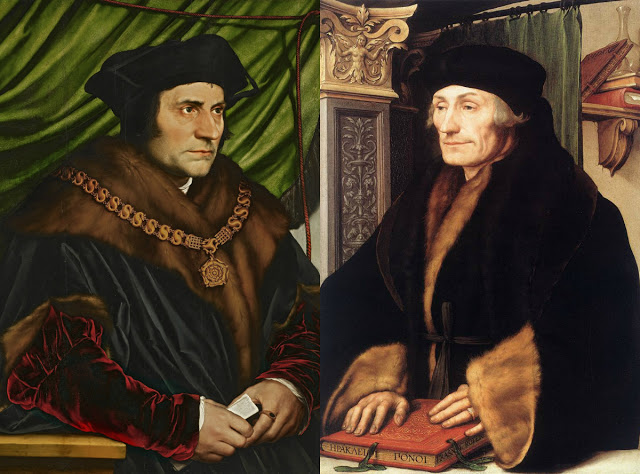
In 1492, as the joke goes, “America discovered Columbus, a Genoese captain lost at sea”. The mission he had been entrusted with was motivated by a variety of intentions, not least the idea of reaching, by traveling west, China, a continent thought to be populated by vast populations unaware of Christ’s inspiring and optimistic message, and therefore in urgent need of evangelization.
Unfortunately, two years later, a less theological interest arose when, on June 7, 1494, the Portuguese and Spanish signed the Treaty of Tordesillas at the Vatican, under the supervision of Pope Alexander IV (Borgia), dividing the entire world between two dominant world powers:
- the Spanish Empire under top-down control of the continental Habsburg/Venice alliance;
- the Portuguese Empire under that of the banking cartel of Genoese maritime slave traders.
This didn’t stop the best European humanists, two centuries before Lahontan, from raising their voices and showing that some of the so-called “savages” of the United States had virtues and qualities absolutely worthy of consideration and possibly lacking here in Europe.
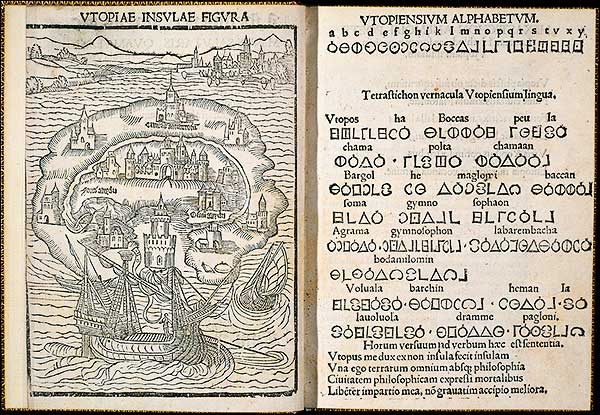
Such was the case with Erasmus of Rotterdam and his close friend and collaborator Thomas More, who shared what are thought to be their views on America in a little book entitled “U-topia” (meaning ‘any’ place), jointly written and published in 1516 in Leuven, Belgium.
By instinct, the reports they received of America and the cultural characteristics of its natives, led them to believe that they were dealing with some lost colony of Greeks or even the famous lost continent of Atlantis described by Plato in both his Timaeus and Critias.
In More’s Utopia, the Portuguese captain Hythlodeus describes a highly organized civilization: it has flat-hulled ships and “sails made of sewn papyrus”, made up of people who “like to be informed about what’s going on in the world” and whom he “believes to be Greek by origin”.
At one point he says:
“Ah, if I were to propose what Plato imagined in his Republic, or what the Utopians put into practice in theirs, these principles, although far superior to ours – and they certainly are –
might come as a surprise, since with us, everyone owns his property,
whereas there, everything is held in common.”
(no private property).
As far as religion is concerned, the Utopians (like the Native Americans)
“have different religions but, just as many roads lead to one and the same place, all their aspects, despite their multiplicity and variety, converge towards the worship of the divine essence. That’s why nothing can be seen or heard in their temples except what is consistent with all beliefs.
The particular rites of each sect are performed in each person’s home;
public ceremonies are performed in a common place;
Public ceremonies are performed in a form that in no way contradicts them.«
And to conclude :
“Some worship the Sun, others the Moon or some other planet (…) The majority, however, and by far the wisest, reject these beliefs, but recognize a unique god, unknown, eternal, in-commensurable, impenetrable, inaccessible to human reason, spread throughout our universe in the manner, not of a body, but of a power. They call him Father, and relate to him alone the origins, growth, progress, vicissitudes and decline of all things. They bestow divine honors on him alone (…) Moreover, despite the multiplicity of their beliefs, the other Utopians at least agree on the existence of a supreme being, creator and protector of the world.”
Exposing the trap of woke ideology
Does that mean that “all Europeans were evil” and that “all Native Americans were good”? Not at all! The authors don’t fall for such simplistic generalizations and “woke” ideology in general.
For example, even with major similarities, the cultural difference between the First Nation of the Canadian Northwest Coast and those of California, was as big as that between Athens and Sparta in Greek antiquity, the first a republic, the latter an oligarchy.
Different people and different societies, at different times, made experiments and different political choices about the axiomatics of their culture.
While in California, forms of egalitarian and anti-oligarchical self-government erupted, in some areas of the north, oligarchical rule prevailed:
“[F]rom the Klamath River northwards, there existed societies dominated by warrior aristocrats engaged in frequent inter-group raiding, an in which, traditionally, a significant portion of the population had consisted of chattel slaves. This apparently had been true as long as anyone living there could remember.”
Northwest societies took delight in displays of excess, notably during festivals known as “potlach” sometimes culminating in
“the sacrificial killing of slaves (…) In many ways, the behavior or Northwest Coast aristocrats resembles that of Mafia dons, with their strict codes of honor and patronage relations; or what sociologists speak of as ‘court societies’ – the sort of arrangement one might expect in, say, feudal Sicily, from which the Mafia derived many of its cultural codes.”
So, the first point made by the authors is that the infinite diversity of human societies has to be taken into account. Second, instead of merely observing the fact, the authors underline that these diversities very often didn’t result from “objective” conditions, but from political choices. That also carries the very optimistic message, that choices different from the current world system, can become reality if people rise to the challenge of changing them for the better.
Urbanization before agriculture

In the largest part of the book, the authors depict the life of hunter-gatherers living thousands of years before the agricultural revolution but able to create huge urban complexes and eventually ruling without a dominant oligarchy.
The book identifies examples in China, Peru, the Indus Valley (Mohenjo-Daru), Ukraine ((Taljanki, Maidenetske, Nebelivka), Mexico (Tlaxcala), the USA (Poverty Point), and Turkey (Catalhoyuk), where large-scale, city-level living was taking place (from about 10,000 BC to 6,000 BC).
But these didn’t involve a ruling caste or aristocratic class; they were explicitly egalitarian in their house building and market trading; made many innovations in plumbing and street design; and were part of continental networks which shared best practice. The agricultural revolution was not a “revolution”, the book argues, but rather a continual transformative process spread across thousands of years when hunter-gatherers were able to flexibly organize themselves into mega-sites (several thousand inhabitants), organized without centers or monumental buildings, but built with standardized houses, comfortable for daily life, all of this achieved without static hierarchies, kings, or overwhelming bureaucracy.
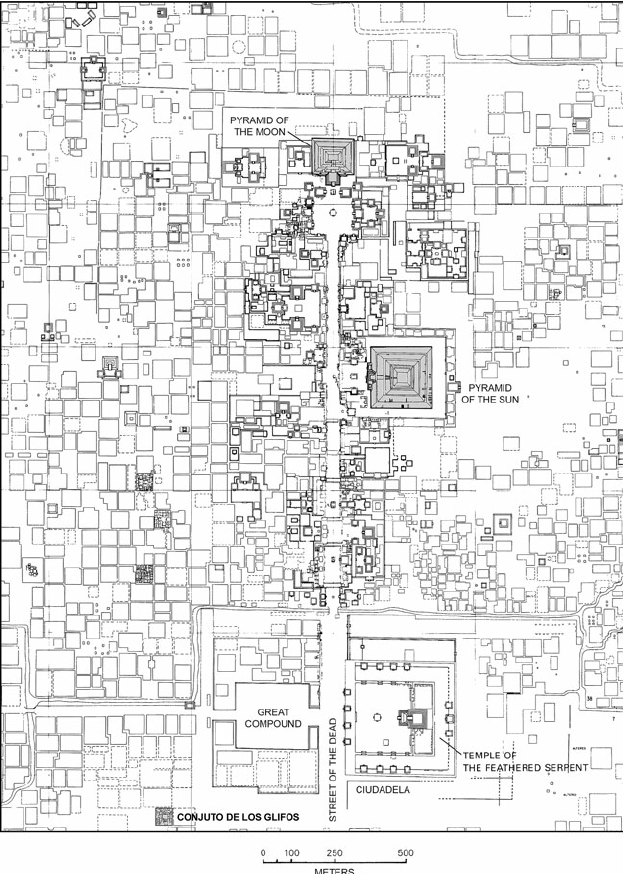
Another case in point is the example of Teotihuacan, which rivaled Rome in grandeur between about 100 BC and 600 AD, where, following a political revolution in 300 AD, an egalitarian culture embarked on a massive social housing program designed to give all residents decent quarters.
Conclusion
Living today, it is very difficult for most of us to imagine that a society, a culture, or a civilization, could survive over centuries without a centralized, forcibly hierarchical power structure.
While, as the authors indicate, archaeological evidence, if we are ready to look at it, tell us the contrary. But are we ready to challenge our own prejudices?
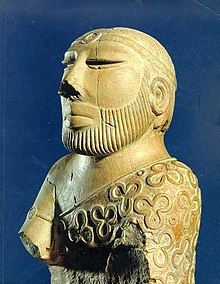
As an example of such self-inflicted blindness, worth mentioning is the case of the “King-Priest”, a small male carved figure showing a neatly bearded man, found during the excavation of the ruined Bronze Age city of Mohenjo-daro (Pakistan), dated to around 2000 BC and considered « the most famous stone sculpture » of the Indus Valley civilization. While in Mohenjo-Daro there exists neither a royal palace or tomb, nor a religious temple of any nature, British archaeologists immediately called it a “King-Priest”, because very simply “it can’t be otherwise”.
Reading Graeber and Wengrow’s book obliges us to adjust our views and become optimistic. They show that radically different human systems are not only possible but have been tried many times by our species. In a public talk in 2022, Wengrow presented what he sees as lessons for the political present from the past, where human beings were much more fluid, conscious and experimental with their social and economic structures :
“Now what do all these details amount to? What does it all mean? Well, at the very least, I’d suggest it’s really a bit far-fetched these days to cling to this notion that the invention of agriculture meant a departure from some egalitarian Eden. Or to cling to the idea that small-scale societies are especially likely to be egalitarian, while large-scale ones must necessarily have kings, presidents and top-down structures of management. And there are also some contemporary implications. Take, for example, the commonplace notion that participatory democracy is somehow natural in a small community—or perhaps an activist group—but couldn’t possibly have a scale-up for anything like a city, a nation or even a region. Well, actually, the evidence of human history, if we’re prepared to look at it, suggests the opposite. If cities and regional confederacies, held together mostly by consensus and cooperation, existed thousands of years ago, who’s to stop us creating them again today with technologies that allow us to overcome the friction of distance and numbers? Perhaps it’s not too late to begin learning from all this new evidence of the human past, even to begin imagining what other kinds of civilization we might create if we can just stop telling ourselves that this particular world is the only one possible.”
La pratique ancestrale d’annulation des dettes
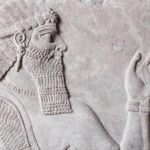
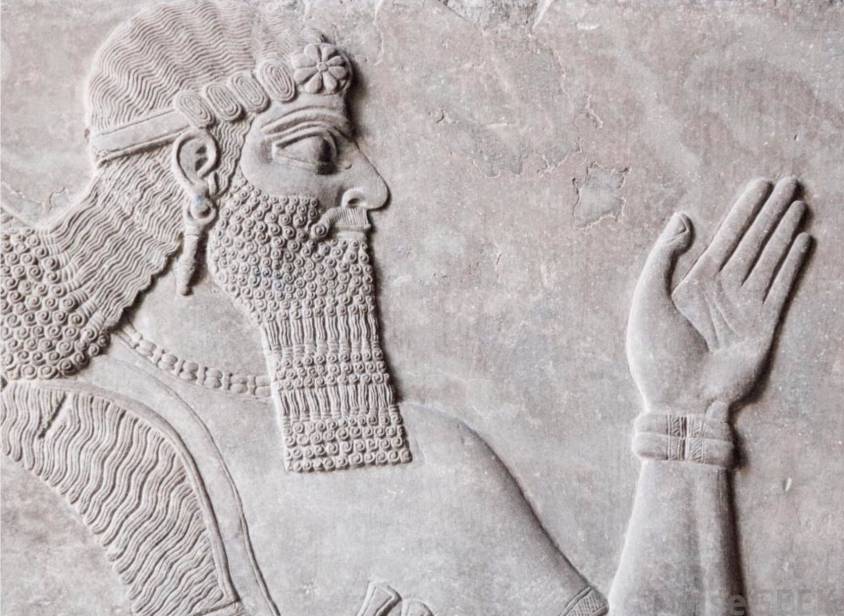
Alors que tout individu doué d’un minimum de rationalité sait fort bien qu’une immense partie des dettes mondiales est absolument impayable, il est un fait qu’aujourd’hui toute annulation d’une dette, fut-elle odieuse ou illégitime, reste tabou.
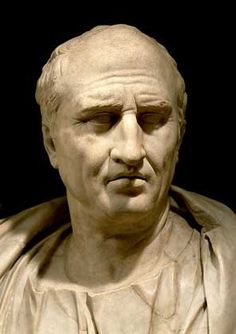
Payer sa dette est présenté par les chefs d’État et de gouvernement, les banques centrales, le FMI et la presse dominante comme impératif, inévitable, indiscutable, obligatoire. Les citoyens ont élu leurs gouvernements, ils doivent donc se résigner à payer la dette. Car ne pas payer, c’est plus que de violer un symbole, c’est s’auto-exclure de la civilisation et renoncer d’avance à tout crédit nouveau que l’on n’accorde qu’aux « bon payeurs ». Ce qui compte, ce n’est pas l’efficacité de l’acte, mais l’expression de sa « bonne foi », c’est-à-dire de sa volonté de soumission aux plus forts. La seule discussion possible porte sur la façon de moduler la répartition des sacrifices nécessaires.
Il semble que le modèle ultra-libéral et monétariste qu’on nous a imposé de façon sournoise soit celui de l’Empire romain : objectif zéro dette pour les États et les villes, et pour le citoyen, aucune rémission de dette !
Dans le traité des Devoirs (De officiis), écrit en 44-43, Cicéron, qui vient de mater une révolte de gens réclamant une rémission de dette, justifie le caractère radical de sa politique face à l’endettement :
Que signifie l’établissement de nouveaux comptes de dettes [c’est-à-dire une rémission], sinon que tu achètes une terre avec mon argent, que cette terre, c’est toi qui l’as, et que moi, je n’ai pas mon argent ? C’est pourquoi il faut veiller à ce qu’il n’y ait pas de dettes, ce qui peut nuire à l’Etat. On peut l’éviter par bien des moyens, mais, s’il y a des dettes, pas de telle façon que les riches perdent leurs biens et que les débiteurs acquièrent le bien d’autrui. Rien en effet ne maintient avec plus de force l’Etat que la bonne foi (fides), qui ne peut exister s’il n’y a pas nécessité de payer ses dettes. Jamais on n’a agi avec plus de force pour ne pas les payer que sous mon consulat. La chose fut tentée par des hommes de toute espèce et de tout rang, les armes à la main, et en installant des camps. Mais je leur ai résisté de telle manière que ce mal tout entier fut éliminé de l’Etat.
Ce qui a été soigneusement occulté, c’est qu’une autre pratique humaine a également existé : des moratoires, des annulations partielles et même généralisées de dette ont eu lieu de manière répétée tout au long de l’histoire et s’effectuaient en fonction de différents contextes.
Souvent, les proclamations d’annulation généralisée de dette étaient décidées à l’initiative de gouvernants soucieux de se conserver et conscients que la seule façon d’éviter la rupture sociale complète était de déclarer un « lavage des tablettes », celles sur lesquelles les dettes des consommateurs étaient inscrites, annulant celles-ci pour repartir de zéro.
L’anthropologue américain David Graeber dans Dette, 5000 ans d’histoire rappelle que le premier mot que nous ayons pour « liberté » dans n’importe quelle langue humaine est l’amargi sumérien, qui signifie libéré de la dette et, par extension, la liberté en général, le sens littéral étant « retour à la mère » dans la mesure où, une fois les dettes annulées, tous les esclaves de la dette pouvaient rentrer chez eux.
Les annulations furent parfois le résultat d’âpres luttes sociales, de guerres et de crises. Ce qui est certain, c’est que la dette n’a jamais été un détail de l’histoire. David Graeber résume : « Pendant des millénaires, la lutte entre riches et pauvres a largement pris la forme de conflits entre créanciers et débiteurs – de disputes sur la justice ou l’injustice de paiement d’intérêts, du péonage, de l’amnistie, de la saisie immobilière, de la restitution au créancier, de la confiscation des moutons, de la saisie des vignobles et de la vente des enfants du débiteur comme esclaves. Et dans les 5000 dernières années, avec une remarquable régularité, les insurrections populaires ont commencé de la même façon : par la destruction rituelle des registres des dettes – tablettes, papyrus, grands livres ou autre support propre à une époque et à un lieu particuliers. (Après quoi les rebelles s’en prenaient en général aux cadastres et aux registres fiscaux.) »
Et comme le plaisait à dire le grand spécialiste de l’Antiquité Moses Finley : « Tous les mouvements révolutionnaires ont eu le même programme : annulation des dettes et redistribution des terres. »
Voici maintenant quelques précédents historiques de rémissions volontaires de dette :
L’annulation des dettes en Mésopotamie

Le règne d’Hammourabi, « roi » de Babylone (situé dans l’Irak actuel), a commencé en 1792 av. J.C et a duré 42 ans.
On nomme « Code Hammourabi », les inscriptions conservées sur une stèle haute de plus de 2 mètres conservée au Louvre. Elle était placée sur une place publique de Babylone. Il s’agit d’un long code de justice très sévère prescrivant l’application de la Loi du talion (« œil pour œil, dent pour dent »). Son épilogue proclame néanmoins que « le puissant ne peut pas opprimer le faible, la justice doit protéger la veuve et l’orphelin (…) afin de rendre justice aux opprimés ».
Hammourabi, à l’instar des autres gouvernants des cités-Etats de Mésopotamie, a proclamé à plusieurs reprises une annulation générale des dettes des citoyens à l’égard des pouvoirs publics, de leurs hauts fonctionnaires et dignitaires. Grâce au déchiffrage des nombreux documents écrits en cunéiforme, les historiens ont retrouvé la trace incontestable de quatre annulations générales de dette durant le règne d’Hammourabi (Au début de son règne en 1792, en 1780, en 1771 et en 1762 av. J.-C.).
La société babylonienne était à forte dominance agricole. Le temple et le palais, ainsi que les scribes et les artisans qu’ils employaient, pour se sustenter, dépendaient d’une vaste paysannerie à laquelle on louait des terres, des outils et du bétail.
En échange, chaque paysan se devait d’offrir une partie de sa production comme loyer. Cependant, lorsque des aléas climatiques ou des épidémies rendaient une production normale impossible, les producteurs s’endettaient.
L’impossibilité dans laquelle se trouvaient les paysans de rembourser les dettes pouvait aboutir également à leur asservissement en tant qu’esclaves (des membres de leur famille pouvaient également être réduits en esclavage pour dette).
Le Code Hammourabi voulait visiblement changer cela, car l’article 48 du Code des lois précise que
Quiconque est débiteur d’un emprunt, et qu’un orage couche le grain, ou que la récolte échoue, ou que le grain ne pousse pas faute d’eau, n’a besoin de donner aucun grain au créancier cette année-là, il efface la tablette de la dette dans l’eau et ne paye pas d’intérêt pour cette année.
Son idéal de justice est notamment porté par les termes kittum, « la justice en tant que garante de l’ordre public », et « la justice en tant que restauration de l’équité » . Il s’affirmait en particulier lors des « édits de grâce » (désignés par le terme mîsharum), une rémission générale des dettes publiques et privées dans le royaume (y compris la libération des personnes travaillant pour une autre personne pour rembourser une dette).
Ainsi, pour conserver l’ordre social, Hammourabi et le pouvoir en place, agissant dans leur propre intérêt et dans l’intérêt de l’avenir de la société, concèdent périodiquement à une annulation de toutes les dettes et à la restauration des droits des paysans afin de sauver l’ordre ancien menacé en temps de crise ou bien, comme un espèce de reset au début du règne d’un souverain.
Les proclamations d’annulation générale de dettes ne se limitent pas au règne d’Hammourabi, elles ont commencé bien avant lui et se sont prolongées après lui. On a la preuve d’annulations de dettes remontant à 2400 av. J.-C., soit six siècles avant le règne d’Hammourabi, dans la cité de Lagash (Sumer), les plus récentes remontent à 1400 av. J.-C. à Nuzi.
En tout, les historiens ont identifié avec précision une trentaine d’annulations générales de dettes en Mésopotamie entre 2400 et 1400 av. J.-C.
Ces proclamations d’annulation de dette étaient l’occasion de grandes festivités, généralement à la fête annuelle du printemps. Sous la dynastie de la famille d’Hammourabi a été instaurée la tradition de détruire les tablettes sur lesquelles étaient inscrites les dettes.
En effet, les pouvoirs publics tenaient une comptabilité précise des dettes sur des tablettes qui étaient conservées dans le temple. Hammourabi meurt en 1749 av. J.-C. après 42 ans de règne. Son successeur, Samsuiluna, annule toutes les dettes à l’égard de l’Etat et décrète la destruction de toutes les tablettes de dettes sauf celles concernant les dettes commerciales.
Quand Ammisaduqa, le dernier gouvernant de la dynastie Hammourabi, accède au trône en 1646 av. J.C, l’annulation générale des dettes qu’il proclame est très détaillée. Il s’agit manifestement d’éviter que certains créanciers profitent de certaines familles. Le décret d’annulation précise que les créanciers officiels et les collecteurs de taxes qui ont expulsé des paysans doivent les indemniser et leur rendre leurs biens sous peine d’être exécutés.
Après 1400 av. J.-C., on n’a trouvé aucun acte d’annulation de dette car la tradition s’est perdue. Les terres sont accaparées par de grands propriétaires privés, l’esclavage pour dette est de retour.
L’annulation des dettes en Egypte
Aujourd’hui exposée au British Museum à Londres, la « Pierre de Rosette » est découverte le 15 juillet 1799 à el-Rashid (Rosette) par un soldat de Napoléon lors de la campagne d’Egypte. Elle comporte le même texte écrit en hiéroglyphes, en démotique (écriture cursive de l’égyptien) et en grec, livrant à Jean-François Champollion la clé du passage d’une langue à l’autre.
Il s’agit d’un décret du 27 mars 196 av. J.-C. du pharaon Ptolémée V annonçant une amnistie pour les débiteurs et les prisonniers. La dynastie grecque des Ptolémée qui a dirigé l’Egypte a institutionnalisé l’effacement régulier des dettes.
Elle s’inscrivait dans des pratiques connues puisque les textes grecs mentionnent que le pharaon Bakenranef, qui a régné au VIIIe siècle avant Jésus-Christ, avait promulgué un décret supprimant l’esclavage pour dette et condamnant l’emprisonnement pour dette.
Transcription de la Pierre de Rosette
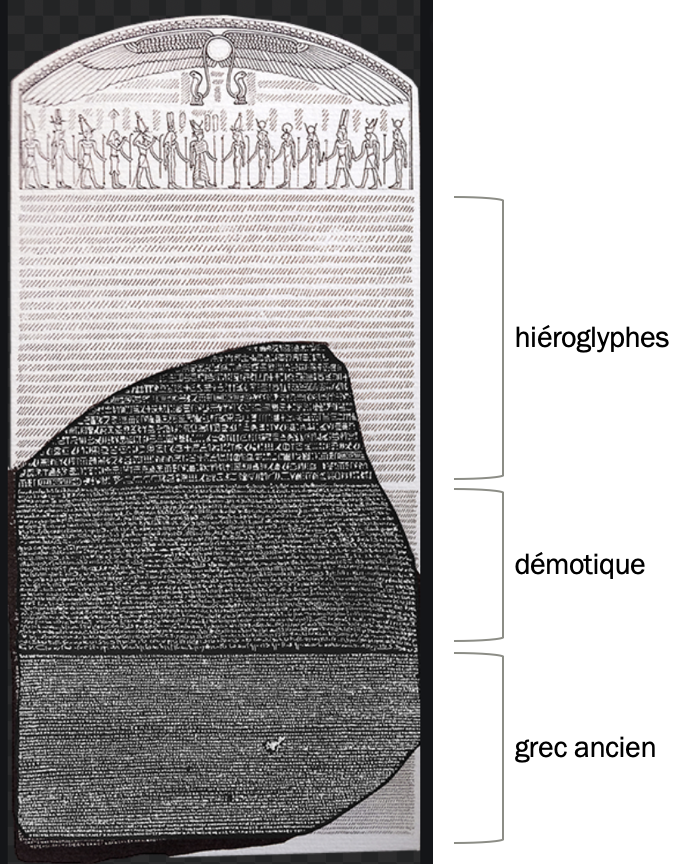
LE DÉCRET.
Se sont assemblés les Prêtres Principaux et Prophètes là et ceux qui entrent dans le temple intérieur pour vénérer les dieux, et les Porteurs d’Eventail et les Scribes Sacrés et tous les autres prêtres des temples de la terre qui sont venus rencontrer le roi à Memphis, pour la fête de l’ assomption de PTOLÉMÉE, LE VIVANT A JAMAIS, LE BIEN-AIMÉ DE PTAH, LE DIEU EPIPHANES EUCHARISTOS, le successeur de son père, Tous se sont assemblés dans le temple de Memphis ce jour où il a été déclaré :que le Roi PTOLEMEE, LE VIVANT A JAMAIS, LE BIEN-AIMÉ DE PTAH, LE DIEU EPIPHANES EUCHARISTOS, le fils du Roi Ptolemée et Reine Arsinoe, les Dieux Philopatores, tous deux bienfaiteurs du temple et de ceux qui y demeurent, aussi bien que de leurs sujets, en étant un dieu issu d’un dieu et la déesse aime Horus le fils d’Isis et Osiris qui ont vengé son père Osiris en étant disposé favorablement envers les dieux, a délivré aux revenus des temples de l’argent et du maïs et a entrepris beaucoup de dépenses pour la prospérité de l’Egypte, et le maintien des temples, et a été généreux envers tous sur ses propres ressources ;
et les a exemptés de quelques uns des revenus et impôts levés en Égypte et en a allégé d’autres afin que ses gens et tous les autres puissent être dans la prospérité pendant son règne ;
et qu’il a effacé les dettes envers la couronne pour de nombreux Egyptiens et pour le reste du royaume ; (…)
L’existence de ce décret confirme donc que la pratique existait depuis de nombreux siècles.
Une des motivations fondamentales des annulations de dette était que le pharaon voulait disposer d’une paysannerie capable de produire suffisamment de nourriture et en mesure, le cas échéant, de participer à des campagnes militaires. Pour ces deux raisons, il fallait éviter que les paysans soient expulsés de leurs terres sous la coupe des créanciers. Dans une autre partie de la région, on constate que les empereurs assyriens du 1er millénaire av. J-C ont également adopté la tradition d’annulations des dettes.
Au Proche-Orient
La justice sociale, particulièrement sous la forme de la remise des dettes qui enchaînent les pauvres aux riches, est un leitmotiv dans l’histoire du judaïsme.
Elle se pratique à Jérusalem, au Ve siècle av. J.-C.. Pour preuve, en 432 av. J.-C., Néhémie, certainement influencé par l’ancienne tradition mésopotamienne, proclame l’annulation des dettes des Juifs endettés à l’égard de leurs riches compatriotes. C’est à cette époque qu’est achevée l’écriture de la Torah.
On peut lire dans le Deutéronome, alinéa 15 :
Tous les sept ans, tu feras relâche. Et voici comment s’observera le relâche. Quand on aura publié le relâche en l’honneur de l’Eternel, tout créancier qui aura fait un prêt à son prochain se relâchera de son droit, il ne pressera pas son prochain et son frère pour le paiement de sa dette.…
Ainsi, les Israélites ont l’obligation de libérer les esclaves hébreux qui se sont vendus à eux pour dettes, et de leur offrir quelques produits de leur petit bétail, de leur champ et de leur pressoir afin qu’ils ne rentrent pas chez eux les mains vides.
Comme la loi est trop peu appliquée, le Lévitique la réaffirme en la modulant :
8 — Tu compteras sept semaines d’années, sept fois sept ans, c’est-à-dire le temps de sept semaines d’années, quarante neuf ans ; 9 — Le septième mois, le dixième jour du mois, tu feras retentir l’appel de la trompe ; le jour des Expiations vous sonnerez de la trompe dans tout le pays ; 10 — Vous déclarerez sainte cette cinquantième année et proclamerez l’affranchissement de tous les habitants du pays. Ce sera pour vous un jubilé : chacun de vous rentrera dans son patrimoine, chacun de vous retournera dans son clan ; 11 — Cette cinquantième année sera pour vous une année jubilaire vous ne sèmerez pas, vous ne moissonnerez pas les épis qui n’auront pas été mis en gerbe, vous ne vendangerez pas les ceps qui auront poussé librement ; 12 — Le jubilé sera pour vous une chose sainte, vous mangerez des produits des champs ; 13 — En cette année jubilaire vous rentrerez chacun dans votre patrimoine ; 14 — Si tu vends ou si tu achètes à ton compatriote, que nul ne lèse son frère ! ; 15 — C’est en fonction du nombre d’années écoulées depuis le jubilé que tu achèteras à ton compatriote : c’est en fonction du nombre d’années productives qu’il te fixera le prix de vente ; 16 —Plus sera grand le nombre d’années, plus tu le réduiras, car c’est un certain nombre de récoltes qu’il te rend. 17 Que nul d’entre vous ne lèse son compatriote, mais aie la crainte de ton Dieu, car c’est moi Yahvé votre Dieu. (Lévitique 25, 10.11)

Aujourd’hui, certains vous diront que dans ces conditions, un an avant la date du jubilé, le crédit se ferait forcément rare et cher et que la dette trouve ainsi sa limite !
C’est se tromper car, pour bien s’assurer que la loi sera suivie, les codes décrivent en détail comment les achats et les ventes de biens entre particuliers doivent se faire en fonction du nombre d’années écoulées depuis le jubilé précédent (c’est-à-dire du nombre d’années qui subsistent avant de devoir rendre ces biens à leur précédent propriétaire).
Un autre passage, cette fois-ci du prophète Jérémie éclaire de façon éclatante la portée de la loi sur la remise des dettes.
Face à l’avancée des armées ennemies vers Jérusalem, en 587 avant J.-C., Jérémie soutient, au nom de Dieu, l’entreprise du roi Sédécias (alors souverain du Royaume de Juda) qui exige des puissants de son royaume la libération immédiate de tous les asservis pour dettes (Jr. 34, 8-17).
Jérémie rappelle avec force l’exigence antique d’affranchissement des esclaves… dont le roi, en fait, a besoin pour réunifier patriotiquement les classes sociales avant la bataille, et se donner en suffisance des troupes libres de toute obligation servile !
Un passage du Livre de Néhémie (447 av. J.-C.) témoigne également de la tradition de remise de dettes. La situation sociale que Néhémie découvre en Judée est épouvantable :
Une grande plainte s’éleva parmi les gens du peuple et leurs femmes contre leurs frères juifs. Les uns disaient : “Nous devons donner en gage nos fils et nos filles pour recevoir du blé, manger et vivre”. D’autres disaient : “Nous devons engager nos champs, nos vignes et nos maisons pour recevoir du blé pendant la famine.” D’autres encore disaient : “Pour acquitter l’impôt du roi, nous avons dû emprunter de l’argent sur nos champs et nos vignes ; et alors que nous avons la même chair que nos frères, que nos enfants valent les leurs, nous devons livrer en esclavage nos fils et nos filles ; il en est, parmi nos filles, qui sont violentées. Nous n’y pouvons rien puisque nos champs et nos vignes sont déjà à d’autres” (Ne. 5, 1-5).
Pour y remédier, Néhémie inscrit la loi de libération des dettes dans un cadre religieux, l’Alliance avec Yahvé. C’est dès lors Dieu lui-même qui commande la remise des dettes et la libération des esclaves et de leur terre car la terre appartient à Dieu seul. « Je fus vivement irrité quand j’appris leur plainte (…), je tançai les grands et les notables. (…) Restituez-leur sans délai leurs champs, leurs vignes, leurs oliviers et leurs maisons, et remettez-leur la dette de cet argent, de ce blé, de ce vin, de cette huile que vous leur avez prêtés. (…) Que Dieu secoue de la sorte, hors de sa maison et de son bien, tout homme qui ne tiendra pas cette parole » (Ne. 5, 6-13).
Si nous ajoutons à ces passages les innombrables versets qui interdisent de prêter à intérêt à leurs semblables et de prendre des biens en gage, nous avons une idée de ce que les Israélites du pays de Canaan avaient mis en place pour tenter de maintenir un certain équilibre social.
Hélas, au premier siècle de notre ère, la remise des dettes et la libération des esclaves pour dettes a été balayée de l’ensemble des cultures du Proche-Orient, y compris en Judée. La situation sociale s’y est tellement dégradée que le rabbi Hillel peut y édicter un décret selon lequel les débiteurs doivent dorénavant signer qu’ils renoncent à jouir de leur droit à la remise des dettes.
Le Nouveau Testament
Que devient la remise des dettes dans le Nouveau Testament ?
Si les Actes des apôtres et les écrits des Pères de l’Eglise expriment parfois une grande docilité, la position de Jésus sur la remise des dettes telle qu’elle est rapportée à de multiples reprises, et avec le plus de force dans l’Evangile de Luc au chapitre 4, apparaît comme marquée d’un souffle prophétique révolutionnaire.
Luc situe le passage au début de la vie publique de Jésus. Il en fait donc une clé de lecture de tout ce qui suivra.
Jésus vint à Nazareth, où il avait été élevé, entra, selon sa coutume le jour du sabbat, dans la synagogue, et se leva pour faire la lecture. On lui présenta le livre du prophète Isaïe et, déroulant le livre, il trouva le passage où il est écrit : ‘L’Esprit du Seigneur est sur moi, parce qu’il m’a consacré par l’onction. Il m’a envoyé porter la bonne nouvelle aux pauvres, annoncer aux captifs la délivrance et aux aveugles le retour à la vue, rendre la liberté aux opprimés, proclamer une année de grâce du Seigneur’. (…) Alors il se mit à leur dire : ‘Aujourd’hui s’accomplit à vos oreilles ce passage de l’Ecriture’ (Lc. 4, 16-21).
Rappelons-nous que « l’année de grâce du Seigneur (année jubilaire) » à laquelle il appelle, exigeait tout à la fois le repos de la terre, la remise des dettes et la libération des esclaves.
En plein Empire romain esclavagiste, qui refuse farouchement le concept de remise des dettes, la déclaration de Jésus ne pouvait être perçue que comme une déclaration de guerre au système en place.
Avant d’être arrêté, Jésus fera un geste matériel hautement symbolique : renverser avec force les tables des changeurs de monnaies dans le temple de Jérusalem. Pour les grands prêtres juifs et les autorités romaines, c’en était trop.
Lors de la guerre froide
Aux Etats-Unis, Eisenhower est élu en novembre 1952. Or, son ministre des Affaires étrangères, John Foster Dulles constate que, en dépit du plan Marshall, l’Europe, toujours à cause d’une Allemagne plombée par une montagne de dettes datant d’avant la Première Guerre mondiale et du Traité de Versailles, n’arrive pas à retrouver du dynamisme. A tel point qu’elle risque de se tourner vers l’URSS ! Il faut donc agir.
En 1953, sous la houlette du banquier allemand Hermann Abs, ancien cadre de la Deutsche Bank, une grande conférence est organisée à Londres. On y décide d’effacer 66 % des 30 milliards de marks de la dette allemande.
On est parti du point de vue que le remboursement annuel de la dette allemande ne devait jamais dépasser plus de 5 % des revenus des exportations. Ceux qui voulaient se faire rembourser leurs dettes par l’Allemagne devaient plutôt lui acheter ses exportations lui permettant ainsi d’honorer ses dettes. Autrement dit, rien à voir avec la folie qu’on a récemment imposée à la Grèce pour « sauver » l’euro !
Bien que cela s’est fait au nom de principes géopolitiques, c’est-à-dire « pour les uns » mais « contre » les autres, une fois de plus, c’est au nom d’un avenir meilleur, c’est-à-dire une Europe capable d’être la vitrine du capitalisme face à Moscou, qu’on a su se délester du poids du passé.